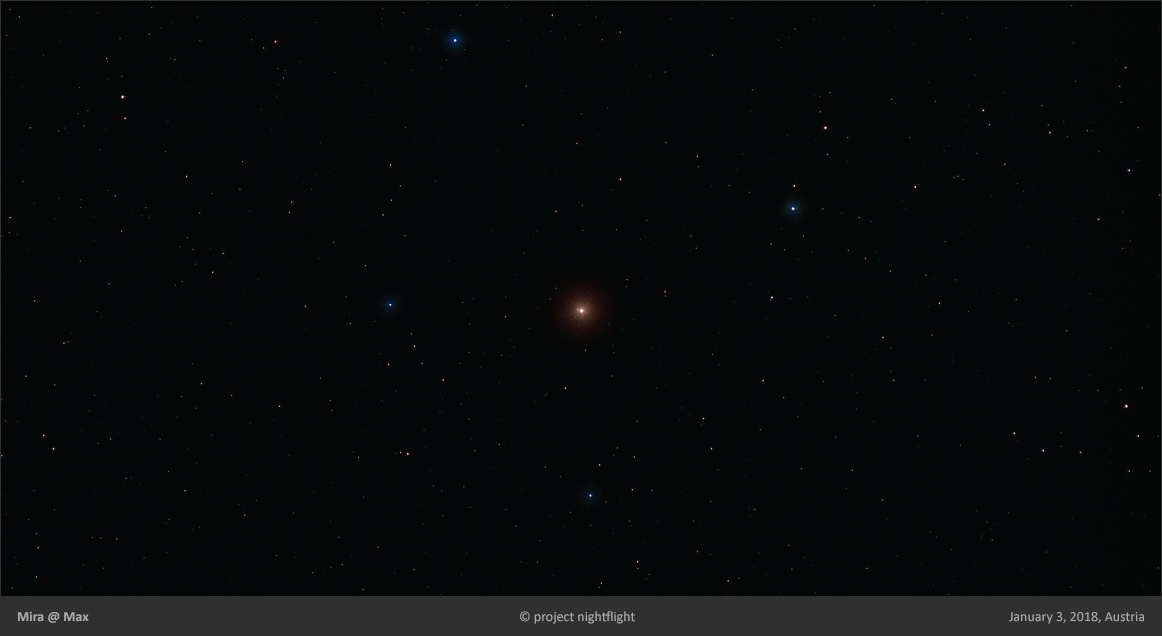
Mira currently offers stargazers the rare opportunity to observe its maximum. Mira is a long-period variable red giant and probably the number one star among the
variables. Predictions vary and are uncertain at best, but this one might be one of its brighter maxima. Official predictions had estimated the brightness to peak
around New Year's Eve of 2017, but recent observations seem to indicate a further increase. Who knows, perhaps Mira will treat us to another one of its magnitude
2 maxima, such as they occurred in 2007, 2010 and 2011 for example. What is certain, is that Mira, aka Omicron Ceti, is conveniently visible in the evening sky
during the next few weeks.
We at project nightflight have been following Mira's brightness develop for several weeks now. Our image of Mira was shot on the evening of January 3, 2018, from
a dark-sky location in Austria with a Canon DSLR and a Zeiss Sonnar 135mm lens. At that time, Mira's brightness was at 3.4 mag. The image approximates how
Mira looked as seen through binoculars and backyard telescopes. We combined several series of different exposure times with a set of diffusor shots to render the
star's appearance more effectively.
With the full moon no longer interfering, its glare will no longer outshine the now bright variable star. Even from moderately dark suburban observing sites it will be
easily visible with the eye alone. When viewed through even small binoculars, it will reveal its distinct salmon color caused by its rather cool surface temperature of
around 3300 K.
[Released January 8, 2018]







